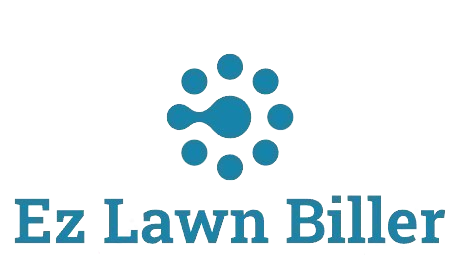Avoid These Common Optimize Routes Mistakes
Optimizing routes for lawn care services is essential for maximizing efficiency and ensuring timely service delivery. However, many lawn care businesses make common mistakes that can hinder performance and reduce profitability. In this article, we’ll explore the pitfalls to avoid when optimizing routes for your lawn service, providing practical insights and solutions that can help improve your operations.
As the lawn care industry grows more competitive, the importance of route optimization cannot be overstated. With the right strategies, companies can save fuel, reduce labor costs, and provide timely service, which translates into higher customer satisfaction. Yet, many business owners overlook crucial aspects of route planning that can lead to inefficiencies. This blog post will cover the most common mistakes and offer actionable tips to ensure you get the most out of your route optimization efforts.
1. Ignoring Real-Time Traffic Data
One of the most significant errors in route optimization is neglecting real-time traffic conditions. Planning a route based purely on distance or estimated travel time without considering current traffic can lead to delays and frustration. Using traffic-aware navigation tools can help your crews avoid congested areas, ensuring timely service delivery.
Incorporating real-time traffic data into your route planning helps mitigate unexpected delays. For instance, if a crew encounters heavy traffic on their way to a job, they can quickly reroute to avoid wasting time. Modern lawn service software often includes mapping features that account for live traffic updates, enhancing the overall efficiency of your operations.
Furthermore, analyzing traffic patterns can help you schedule services during off-peak hours. This not only helps in avoiding delays but also minimizes wear and tear on your vehicles, leading to reduced maintenance costs in the long run.
2. Failing to Group Jobs by Location
Another common mistake is not grouping jobs effectively by location. When service providers schedule jobs randomly without considering proximity, they waste valuable time traveling between distant locations. This inefficiency can lead to increased fuel costs and reduced service capacity.
By prioritizing jobs that are close to each other, lawn service providers can streamline their daily operations. For example, a lawn care company that schedules three jobs in the same neighborhood can complete them in one trip rather than making multiple trips across town. This not only saves time but also enhances customer satisfaction, as clients will appreciate prompt service.
Utilizing a lawn service app with an integrated scheduling feature can significantly simplify this process. Such software allows you to visualize job locations on a map and automatically suggest optimal routes based on clustered jobs, ensuring that your team spends less time driving and more time servicing lawns.
3. Overlooking Service Time Estimates
Many businesses underestimate the time required for each service, leading to over-scheduling and ineffective route planning. When route optimization does not factor in realistic service times, crews may find themselves rushed or unable to complete their tasks adequately.
To avoid this pitfall, it’s crucial to establish accurate service time estimates based on past performance for each type of job. For instance, mowing a large lawn will take significantly longer than performing a simple fertilization treatment. Implementing these time estimates into your route planning ensures that your crews have sufficient time to complete each job without compromising quality.
Additionally, providing your team with sufficient time for breaks and travel between jobs can enhance their productivity. A well-planned schedule will not only reduce stress but also lead to higher quality work and better client relationships. Accurate time tracking features within service company software can greatly assist in this area, enabling better job time predictions.
4. Neglecting Customer Preferences
Customer preferences can significantly influence your route optimization process, yet they are often overlooked. Ignoring the specific needs and requests of your clients can lead to dissatisfaction and loss of business. Ensuring that service times align with customer availability can greatly improve client retention.
For example, some customers may prefer services to be performed on specific days or within certain time windows. By taking these preferences into account when planning routes, businesses can enhance customer satisfaction and potentially receive more referrals.
Furthermore, using a lawn service app where clients can easily communicate their preferences or schedule changes can be beneficial. This level of engagement shows your clients that you value their input, which helps build long-term relationships.
5. Not Evaluating Route Performance
After implementing route optimization strategies, it’s vital to assess their effectiveness continually. Many businesses make the mistake of failing to review their route performance, which can result in missed opportunities for improvement. Analyzing data from completed routes can provide valuable insights into areas that need adjustment.
Monitoring key performance indicators, such as fuel consumption, time spent on the road, and service completion rates, can highlight inefficiencies. For instance, if a particular route consistently results in delays or missed appointments, it may be time to reevaluate how those jobs are being scheduled.
Incorporating advanced reporting features in your lawn company computer program can help you track performance over time. By regularly analyzing these metrics, you can adapt your strategies to ensure ongoing efficiency and customer satisfaction.
6. Underutilizing Technology
In today’s digital age, many lawn care companies fail to leverage the full potential of technology for route optimization. Some businesses still rely on manual scheduling and paper maps, which can lead to numerous inefficiencies. Embracing modern lawn service software can dramatically enhance your route planning processes.
The right lawn service app can automate many aspects of route optimization, from scheduling to navigation. Features such as GPS tracking, automated job assignments, and real-time updates can significantly improve operational efficiency. By minimizing the manual workload, you can also reduce the risk of human error.
Moreover, consider investing in software that integrates customer relationship management (CRM) capabilities. This can provide a holistic view of your client interactions, helping you make more informed decisions regarding service routes and customer engagement.
7. Overcomplicating the Optimization Process
Sometimes, businesses make the mistake of overcomplicating their route optimization process with unnecessary variables. While it’s essential to consider various factors like traffic and service times, adding too many elements can lead to confusion and ineffective routes.
Simplicity is key when it comes to optimizing routes. Focus on the most critical factors that affect your operations, such as proximity, service duration, and customer preferences. Streamlining your processes will allow your team to focus on delivering quality service rather than getting bogged down in overly complex planning.
Additionally, using a user-friendly lawn company app can simplify the optimization process. A simple interface can help your team quickly adapt to new routing guidelines, reducing training time and increasing overall productivity.
8. Failing to Train Staff on New Practices
Even with the best route optimization tools, your efforts can fall flat if your staff is not adequately trained on how to use them. It’s common for businesses to invest in technology without providing the necessary training and support for their employees.
To maximize the benefits of route optimization, invest in comprehensive training programs for your team. Ensure that they understand how to use your lawn service software effectively and the importance of following optimized routes. Regular training sessions can also reinforce best practices and keep your team informed about any updates or changes in the software.
Encouraging feedback from your staff can help identify any pain points with the routing process. By fostering an environment of open communication, you can continuously improve your operational strategies and enhance service delivery.
9. Ignoring Seasonal Adjustments
Seasonal changes can significantly impact lawn care services, and failing to adjust routes accordingly is a common mistake. Different seasons may require various services, affecting the overall demand and scheduling of jobs. Not adjusting for these seasonal variations can lead to inefficiencies.
For example, spring and summer often see increased demand for mowing and fertilization services, while fall may focus more on aeration and leaf removal. By adapting your scheduling and routes based on seasonal needs, you can optimize your operations further.
Moreover, consider using seasonal data to forecast service needs and adjust your staffing and equipment accordingly. A well-prepared lawn care service can take advantage of busy seasons while maintaining high levels of customer satisfaction.
10. Not Utilizing Customer Feedback
Finally, many businesses overlook the importance of customer feedback in their routing processes. Clients may have insights into how your services could be improved, yet failing to gather and analyze this feedback can lead to missed opportunities for optimization.
Encouraging your clients to provide feedback about service times, preferences, and overall satisfaction can help inform your route planning. This information allows you to make adjustments that meet client expectations and improve service quality.
Incorporating a feedback loop into your lawn service app can streamline this process. Clients can easily submit their thoughts and suggestions, allowing you to adapt your operations based on real-time information.
Conclusion
Optimizing routes is critical for lawn care businesses looking to enhance efficiency and improve customer satisfaction. By avoiding common mistakes such as ignoring traffic data, failing to group jobs by location, and not considering service time estimates, you can achieve better results.
As we’ve discussed, leveraging technology, training your staff, and incorporating customer feedback are essential for succeeding in route optimization. The strategic use of lawn billing software, tailored for service companies, can significantly streamline your operations.
Take proactive steps to implement these insights, and watch your lawn care business thrive. By focusing on effective route optimization, you’ll not only save time and resources but also strengthen your client relationships, paving the way for future growth.




